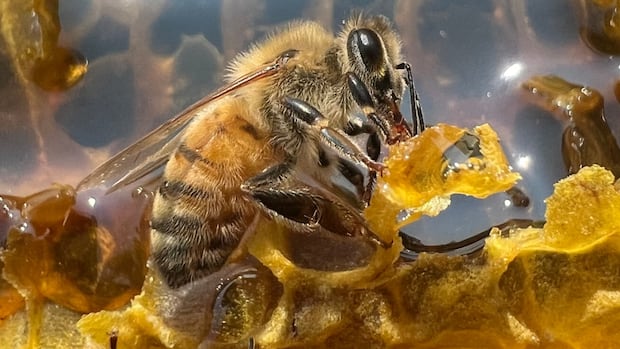‘We basically lost everything’: Bats force Sask. family to abandon house

Rachelle and Kelly Swan have faced a challenging situation in their living space for the past few years. After buying a house in Spiritwood, Saskatchewan, they were forced to abandon it due to a severe bat infestation. The constant screeches, high-pitched chirps, and squeaks from the bats made their home uninhabitable, causing the family to take drastic measures.
Despite their best efforts to seek help from various authorities and agencies, including exterminators, conservation officers, and government ministries, the Swans were left with no choice but to foreclose on their home and move to a rented low-income government house. The move, while necessary, has had a significant impact on their finances and credit score, leaving them in a difficult situation.
The new house may be a safer and more comfortable environment, but it is still cramped, especially with three kids and their oldest daughter’s boyfriend sharing one bathroom. The family had to adjust to the limited space and make do with what they have, even after their daughter and her boyfriend left for university.
Rachelle’s disappointment with the authorities’ response to their bat infestation is palpable. Despite spending thousands of dollars on sealing the roof and installing bat cones, the problem persisted, leading to the family’s decision to leave the house. The lack of assistance from government officials and the inability to recoup their losses have left the Swans feeling let down and frustrated.
The stringent regulations protecting bats in Saskatchewan have also posed challenges for the family. Killing the bats was not an option due to legal restrictions, leaving them with limited options for dealing with the infestation. The rules around bat exclusion and protection have made it difficult for homeowners like the Swans to find a resolution to their problem.
Experts in wildlife and pest control have highlighted the challenges of bat exclusion and the importance of proper training and procedures in dealing with infestations. Perry Reavley, president of Critter Gitter Wildlife & Pest Control, emphasized the need for industry standards and expertise in handling bat-related issues to prevent further problems.
Moving forward, Rachelle advises others facing similar situations to be cautious and consider all options carefully. While the government’s regulations and policies may be well-intentioned, they can sometimes fall short in addressing real-world issues like bat infestations. Finding a balance between protecting wildlife and ensuring the safety and well-being of homeowners is crucial in resolving these complex situations.
In conclusion, the Swan family’s experience serves as a cautionary tale of the challenges and frustrations that can arise from dealing with bat infestations. Their journey highlights the importance of seeking professional help, understanding legal regulations, and advocating for better support and solutions from government authorities. Despite the setbacks they have faced, the Swans remain resilient and hopeful for a brighter future in their new home.




